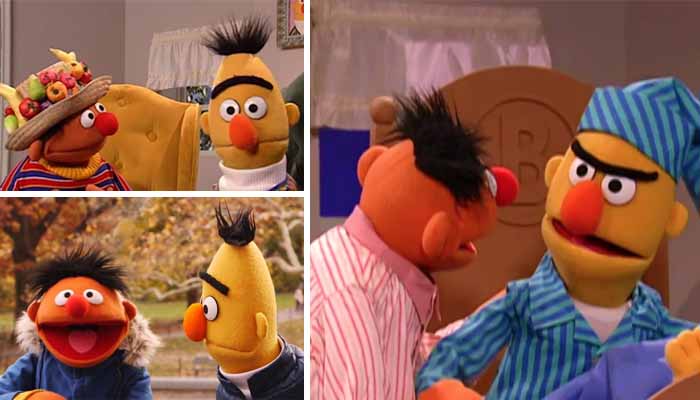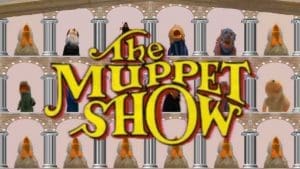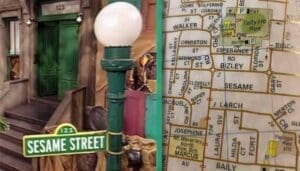Sesame Street Didn’t Prepare Us For Real Roommates (But Bert & Ernie Tried)
Let’s be honest. Anyone who’s ever shared living space with another human being – be it a dorm room, a questionable apartment, or even just a particularly long family vacation – knows the unique blend of joy, compromise, and soul-crushing annoyance that comes with cohabitation. Long before we navigated passive-aggressive sticky notes about dirty dishes or deciphered the cryptic horrors of roommate-finding apps, television offered us a masterclass in shared-living dynamics, courtesy of a certain basement apartment at 123 Sesame Street.
Enter Bert and Ernie. Since their debut on the pilot episode of Sesame Street way back in 1969 , this felt odd couple has been demonstrating the hilarious friction that occurs when an agent of chaos moves in with a connoisseur of quietude. Their immediate positive reception was actually pivotal, helping solidify the Muppets’ central role in the show, interacting directly with the human cast. But Bert and Ernie transcended their educational mandate; they became, and remain, enduring icons of comedic conflict, relatable frustration, and the baffling endurance of friendship. They are the roommates we recognize, the dynamic we understand, distilled into primary colors and pure, unadulterated felt.
The Original Odd Couple: Now With More Oatmeal and Less Subtext
At the heart of Bert and Ernie’s enduring appeal lies their perfectly polarized personalities. On one side, we have Bert: the tall, yellow Muppet with the impressive vertical head, a unibrow so expressive it deserves its own SAG card , and a wardrobe favoring sensible vertical stripes. Bert is the serious one, the neat freak, the voice of (often ignored) reason. His passions are the stuff of legend, primarily because they are legendarily… well, dull. Bert finds profound joy in the meticulous organization of paper clips and bottle caps. He contemplates the quiet dignity of pigeons, especially his beloved Bernice. He appreciates a good bowl of oatmeal. According to his original performer, Frank Oz, Bert is, quite simply, “boring”.
And then there’s Ernie. Shorter, rounder, perpetually grinning, and radiating chaotic energy. Ernie is the naive, exuberant mischief-maker, prone to practical jokes and flights of fancy, punctuated by his signature chuckle. He lives in a world of bright ideas, most of which seem specifically designed to disrupt Bert’s carefully curated tranquility. His greatest love, aside from his best buddy Bert, is bath time, an event presided over by his iconic companion, Rubber Duckie.
This dynamic – the neatnik vs. the agent of chaos sharing an apartment – immediately brings to mind another famous pair: Felix Ungar and Oscar Madison of Neil Simon’s The Odd Couple. The comparison is apt; Bert and Ernie are widely seen as a “kiddified” version of that classic setup. Felix, like Bert, was prim and tidy; Oscar, like Ernie, was messy and carefree. However, The Odd Couple‘s humor often relied on subtext rooted in mid-century anxieties about gender roles and masculinity, with the “feminine-coded” Felix clashing with the slobbish Oscar in a way that mimicked traditional marriage dynamics.
Bert and Ernie, appearing just as The Odd Couple was hitting peak popularity on screen, cleverly stripped away these complex, potentially uncomfortable layers. Their conflicts aren’t about societal expectations; they stem purely from their inherent, wildly different personalities. Bert isn’t uptight because he’s channeling a 1950s housewife; he’s uptight because Ernie is singing loudly while he’s trying to count his paperclips. This focus on fundamental personality differences, rather than gendered subtext, allows their humor to remain timeless and universally understood. It creates two equally valid, if hilariously incompatible, ways of being. The originators even noted that the characters’ dynamic mirrored the real-life friendship between Muppet masterminds Jim Henson (originally Ernie) and Frank Oz (originally Bert), before they swapped roles after just one day. The goal was simple: show that even total opposites can be best buddies.
A Symphony of Annoyance: Bert and Ernie’s Greatest Skit Hits
The beauty of a Bert and Ernie sketch lies in its predictable, yet endlessly amusing, structure. It’s a comedic ballet of escalating irritation:
- Ernie hatches a “hare-brained idea”.
- Bert, sensing disaster, attempts to reason, resist, or retreat.
- Ernie persists, cheerfully oblivious.
- The situation escalates, usually involving noise, mess, or misunderstanding.
- Bert reaches his breaking point (cue exasperated sigh, leaving the room, or muffled cry of “ERNIE!”).
- Ernie remains blissfully unaware, perhaps even dumbfounded, by Bert’s reaction.
This reliable formula has produced decades of comedic gold. Who can forget the Snack Sharing Saga? Bert brings out a treat, Ernie suggests they share, but one piece is slightly bigger. Ernie, in the interest of fairness, eats the extra bit… and continues “evening things out” until the entire snack vanishes. Or the times Ernie “accidentally” eats Bert’s food and then tries (and fails) to hide the evidence? One particularly memorable sketch involved Bert refusing to share his cookie, leading to Ernie employing Bugs Bunny-level tactics to get a bite, culminating in Bert mechanically asking Ernie to share his cookie back.
Then there’s the auditory absurdity of “I’ve Got a Banana In My Ear.” Bert tries to talk to Ernie, who keeps asking “What?” because, well, he has a banana lodged in his ear canal. The genius is in the deadpan delivery and Bert’s slow burn realization.
Bert’s Quest for Quiet is a recurring tragedy. He just wants to read his book or newspaper in peace. Ernie, however, decides it’s the perfect time to practice the drums, learn the saxophone, or simply be loud for loudness’s sake. Bert’s attempts to teach Ernie the concept of “quiet” inevitably backfire spectacularly.
And Sleep? What’s Sleep? For Bert, it’s an elusive dream constantly shattered by Ernie’s nocturnal antics. Ernie might decide to “Dance Myself to Sleep,” complete with tap-dancing sheep and a bugle solo, leaving Bert wide-eyed in despair. Or perhaps Ernie is thirsty and embarks on a noisy quest for an imaginary glass of water, followed by a real glass (or two), complete with loud glugging sounds from the bathroom. The sheer variety of ways Ernie manages to keep Bert awake is a testament to his boundless, disruptive energy. It’s a miracle Bert isn’t fueled entirely by caffeine and resentment.
Other classics include “Here Fishy Fishy!” where Ernie demonstrates the correct (LOUD) way to summon fish, much to Bert’s quiet frustration. There’s the Great Cookie Jar Catastrophe, a chain reaction of displacement starting with a broken cookie jar and ending, inexplicably, with Ernie putting the fish in Bert’s cowboy hat. And let’s not forget Ernie’s adventures in Imagination Gone Wild, like convincing Bert to talk to Gladys the Elephant on a banana phone or the time they Swapped Roles, giving Ernie a fleeting moment of empathy before he immediately wakes Bert up to tell him about it. The humor isn’t just in the punchline; it’s in the journey, the familiar dance of annoyance we know is coming, executed with perfect comedic timing.
Bert’s Burden: The Zen of Paperclips and the Majesty of Pigeons
Oh, Bert. If ever a Muppet embodied the quiet desperation of trying to maintain order in a chaotic universe, it’s him. His suffering is our comedy, his exasperation our entertainment. Let’s take a moment to appreciate the hilarious pathos of Bert. His interests are famously mundane, elevated to near-sacred status in his world. Are paperclips truly the key to organizational nirvana? Do pigeons, like his dear Bernice, whisper secrets of the city on the wind? Is oatmeal the ultimate comfort food, a warm, lumpy shield against the world’s (and Ernie’s) absurdity?
Bert’s desire for quiet, for order, for a moment to simply read his book is constantly thwarted by the whirlwind that is Ernie. His neatness, his seriousness, his very vertically-striped existence seems designed as the perfect foil for Ernie’s gleeful disruption. He represents that relatable human struggle to carve out a little space for oneself, to maintain a routine, to just have five minutes of peace, darn it! His specific, almost comically dull passions make his frustration even funnier. It’s not just that he likes order; it’s that he likes bottle caps. This specificity makes his valiant, doomed quest against the tide of Ernie all the more endearing and hilarious.
Ernie: Agent of Chaos, Patron Saint of Bath Time
If Bert is the anchor of order, Ernie is the cheerfully unmoored balloon of chaos. He’s mischievous, a frequent deployer of practical jokes, yet possesses an undeniable innocence. He’s the free spirit, the naive optimist, the Muppet most likely to put a pot on your head because the fish is in your cowboy hat. His approach to life seems to be “Why not?” – usually followed by Bert explaining exactly why not.
And then there’s the bath. Ernie’s love for bath time is legendary, inextricably linked to his most famous accessory: Rubber Duckie. His ode to his squeaky yellow friend, “Rubber Duckie,” isn’t just a cute song; it was a genuine mainstream hit, reaching No. 16 on the Billboard Hot 100 chart in 1970. The song captures Ernie’s simple joy and affection perfectly (“Rubber Duckie, you’re the one / You make bath time lots of fun” ). Is the Duckie sometimes an accomplice in Bert’s torment, like when it allegedly learns to play the bugle? Perhaps. But mostly, it represents Ernie’s capacity for finding delight in the everyday.
Crucially, Ernie rarely seems to intend malice. His disruption stems from genuine enthusiasm or naive curiosity. He wants to share his game, his song, his latest bizarre thought process with his best buddy. His obliviousness to the annoyance he causes is precisely what makes him funny. If he were deliberately cruel, the dynamic wouldn’t work. His innocence is his comedic superpower, allowing us to laugh at the chaos without ever truly disliking the chaos agent himself. He even spreads his unique energy around, appearing in skits with Cookie Monster, Grover, and Lefty the Salesman.
The Elephant (or Pigeon?) in the Room: Let’s Talk About That
No discussion of Bert and Ernie is complete without addressing the decades-long speculation about the nature of their relationship. Are they just roommates? Best friends? Or… more? The “Are Bert and Ernie gay?” question has become a pop culture phenomenon in itself, a recurring debate fueled by their shared bedroom (separate beds, mind you!), their bickering intimacy, and society’s evolving understanding of relationships.
The conversation reignited significantly when former Sesame Street writer Mark Saltzman revealed in a 2018 interview that, during his tenure (1984-1998), he always wrote them as a loving couple, drawing inspiration from his own relationship with his partner, Arnold Glassman. “I don’t think I’d know how else to write them, but as a loving couple,” he stated.
This contrasted sharply with the long-standing official position from Sesame Workshop: Bert and Ernie are simply best friends, created to teach children about appreciating differences. They consistently state that, as puppets, Bert and Ernie “do not have a sexual orientation”. Frank Oz, Bert’s originator, echoed this, tweeting “They’re not, of course,” while also questioning why it mattered.
The discussion itself has spawned countless jokes, parodies, and interpretations. There was the iconic 2013 New Yorker cover depicting the pair watching the Supreme Court’s decision on same-sex marriage. There’s the adult musical Avenue Q, featuring clear parodies Rod and Nicky. There was the infamous “Bert is Evil” meme website from the late 90s/early 2000s , and Germany’s edgier parody sketch Bernie und Ert. Fan-made videos often use bleeps or suggestive subtitles to play on the subtext , and recent TikTok comments sections frequently erupt with fans declaring them “roommates” with a knowing wink or comparing them to famous duos like Dan and Phil.
Ultimately, the humor lies less in the answer and more in the persistence of the question. Applying complex human labels to felt puppets designed to teach toddlers about friendship is inherently a bit absurd. Yet, the conversation highlights how representation is sought and found, sometimes in unexpected places. Perhaps the most realistic aspect of their dynamic, regardless of interpretation, is the constant bickering – a hallmark of many long-term relationships, platonic or otherwise.
Conclusion: Still Annoying Each Other, Still Our Buddies
For over half a century, Bert and Ernie have squabbled, shared snacks (disastrously), disrupted sleep schedules, and navigated life’s little absurdities together in their basement apartment. Their perfectly balanced conflict – Bert’s yearning for order versus Ernie’s embrace of chaos – is the engine of their comedy. But underneath the exasperated sighs and playful teasing lies a genuine, enduring affection.
They embody the core Sesame Street message that friendship can thrive despite differences. They teach kids (and remind adults) about understanding different perspectives, even if that perspective involves wanting to play the bugle at bedtime. Their friendship isn’t perfect or frictionless; it’s messy, loud, sometimes infuriating, but always resilient.
That’s why, after all these years, they remain comedy gold. They are the odd couple we grew up with, the roommates whose antics still make us chuckle. We can only imagine Bert finally settling down with his pigeon magazine, a rare moment of silence descending… only for Ernie to burst in, beaming, holding a tuba and asking, “Hey Bert, wanna learn how to play ‘Flight of the Bumblebee’?”. Some things never change. And in their case, we wouldn’t want them to.




